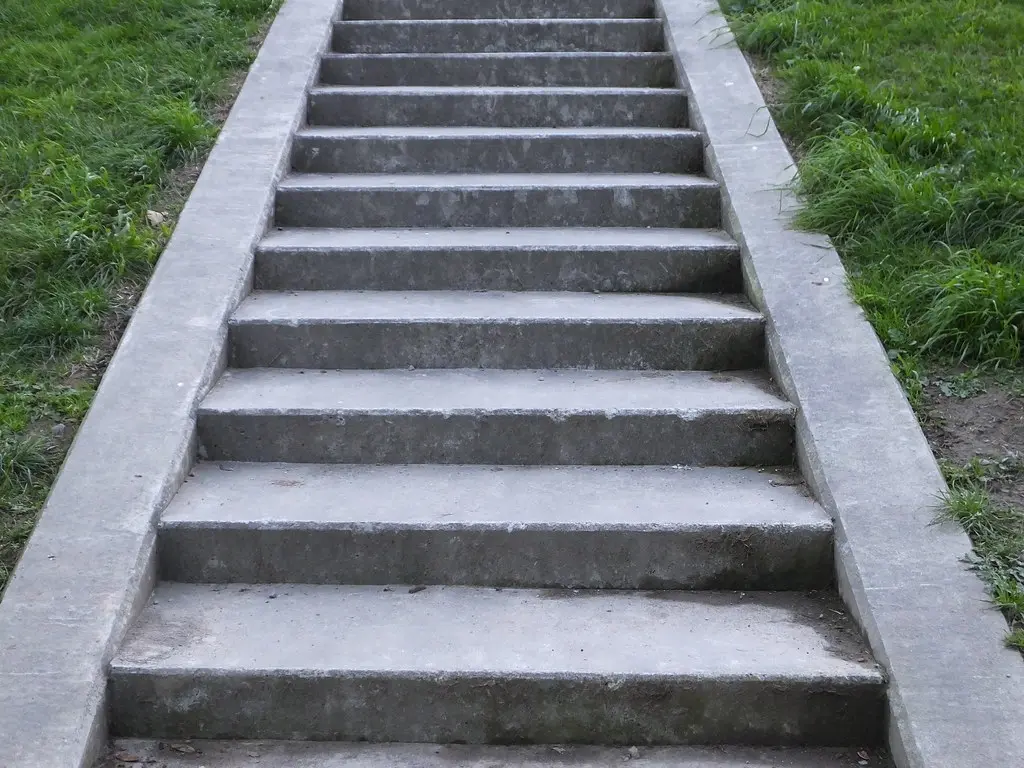Concrete steps are a popular feature in many homes and properties due to their durability, low maintenance, and clean, modern look. However, without consistent care, concrete steps can deteriorate over time, leading to cracks, uneven surfaces, and unsightly stains that not only reduce curb appeal but also create safety hazards.
In this comprehensive guide, you’ll discover effective strategies to maintain your concrete steps, prevent common issues, and extend their lifespan. From routine cleaning and sealing to timely repairs and winter protection, these practical tips will help you keep your steps looking great and functioning safely for years.
Whether you’re a homeowner, DIY enthusiast, or property manager, this post provides actionable advice tailored to preserving and enhancing your concrete steps’ performance and appearance.
Why Proper Maintenance Matters
Concrete steps endure constant exposure to environmental stressors such as rain, snow, temperature fluctuations, and heavy foot traffic. These elements contribute to surface cracks, erosion, discoloration, and uneven settling over time. Neglecting upkeep not only diminishes your property’s aesthetic appeal but also increases the risk of accidents due to unstable or slippery surfaces.
Consistent maintenance of your concrete steps preserves their structural integrity and appearance, ultimately saving you from costly repairs and ensuring safety for all users.
Inspect Your Concrete Steps Regularly – Why Regular Inspections Are Vital
Conduct routine inspections every six months to identify early signs of deterioration. Addressing small issues like hairline cracks and minor discoloration promptly prevents them from escalating into larger, more expensive repairs.
How to Conduct an Inspection
- Look for Cracks: Identify any small or growing cracks that could weaken your steps.
- Check for Uneven Surfaces: Look for shifting or settling that causes unevenness.
- Examine Edges: Detect any chipping or crumbling edges that may pose safety hazards.
- Inspect for Stains or Mold: Watch for slippery patches caused by mold or algae growth.
Address Small Repairs Promptly
Repairing minor cracks and chips early prevents further damage and preserves your steps’ structural soundness.
How to Repair Minor Cracks
- Materials Needed: Concrete repair caulk or patching compound, scraper, wire brush.
- Clean the cracked area thoroughly using a wire brush to remove loose debris.
- Apply the concrete repair caulk or patching compound directly into the crack.
- Smooth the surface with a scraper to ensure even filling.
- Allow the material to dry and cure following the manufacturer’s instructions.
For larger or deep cracks, consult a professional contractor to avoid potential structural issues.
Clean Your Concrete Steps
Routine cleaning removes dirt, mold, algae, and other substances that can degrade concrete and make surfaces slippery.
Cleaning Tools and Supplies
- Broom or stiff-bristle brush
- Bucket of warm water
- Mild dish soap or a concrete-friendly cleaning solution
How to Clean Your Steps
- Sweep away loose dirt and debris to avoid scratching the surface during cleaning.
- Rinse the steps with clean water to loosen any grime.
- Scrub the surface using a mixture of warm water and mild soap with a brush.
- Rinse thoroughly with water and allow the steps to air dry completely.
For persistent stains or stubborn mold, use a pressure washer or a specialized concrete cleaner like specialty to restore the surface effectively.
Apply a Concrete Sealer
Because concrete is porous, it readily absorbs moisture, which can lead to cracking and staining. Applying a high-quality concrete sealer — either professionally by professional concrete sealing services or as a DIY project — creates a protective barrier that prolongs your steps’ durability and appearance.
Benefits of Sealing
- Water Resistance: Minimizes damage from freeze-thaw cycles and water infiltration.
- Stain Prevention: Repels oil, dirt, and other contaminants to maintain cleanliness.
- Enhanced Appearance: Provides a fresh, polished finish that boosts curb appeal.
How to Seal Your Steps
- Ensure your steps are completely clean and dry before applying the sealer.
- Choose a sealer type aligned with your needs (penetrating or topical).
- Apply the sealer evenly using a roller or sprayer for full coverage.
- Allow the sealer to cure for at least 24 hours before using the steps.
Reapply sealant every 2–3 years or as specified by the product to maintain effective protection.
Prevent Ice and Snow Damage
Winter conditions can make concrete steps slippery and accelerate deterioration from freeze-thaw cycles. Proper removal and prevention techniques minimize these risks.
Snow and Ice Removal Tips
- Use a plastic shovel to avoid scratching or chipping your concrete surface.
- Avoid harsh chemical de-icers like rock salt; instead, use concrete-safe products such as calcium chloride.
- After snow removal, apply sand or kitty litter to enhance traction and prevent slips.
Protecting Sealed Steps in Winter
Sealed concrete steps resist moisture penetration, significantly reducing the risk of freeze-thaw damage during winter months and helping maintain structural integrity.
Address Drainage Issues
Water pooling around concrete steps accelerates deterioration and promotes mold growth. Managing drainage effectively is crucial to preserving your steps.
How to Improve Drainage
- Check Gutters: Ensure gutters and downspouts divert water away from your steps.
- Slope Surrounding Areas: Grade the ground to slope away from steps to prevent standing water.
- Fill Low Spots: Use gravel or soil to eliminate puddles that collect near your steps’ base.
Promptly addressing drainage prevents water damage, prolonging the life of your concrete steps.
Add Non-Slip Treads for Safety
Enhancing traction on concrete steps reduces slip and fall accidents, especially during wet or icy conditions.
Options for Non-Slip Solutions
- Adhesive Treads: Easy to apply and replace, providing immediate grip.
- Non-Slip Coatings: Sprays or paints that add textured surfaces for improved traction.
- Rubber Mats: Seasonal mats particularly effective during winter months for added safety.
Installing these safety features is especially important for households with children, seniors, or anyone with mobility challenges.
How to Maintain Appearance Over Time
Concrete is inherently durable but can lose its aesthetic appeal due to UV exposure, dirt accumulation, and aging. Follow these steps to keep your steps looking fresh:
- Use a Pressure Washer: Periodically deep clean to remove embedded dirt and grime.
- Apply a Concrete Stain: Refresh faded concrete with staining products that complement your home’s style.
- Replace Worn Treads: Update adhesive treads or mats to maintain both appearance and safety.
Regular maintenance preserves the polished appearance and extends the life of your concrete steps.
Looking Ahead to Long-Lasting Concrete Steps
Though maintaining concrete steps requires ongoing care, the benefits of safety, durability, and enhanced curb appeal make it a worthwhile investment. Scheduling regular inspections, addressing repairs promptly, and employing preventive practices—such as sealing and drainage management—will help you avoid costly replacements and ensure your concrete steps continue to be a reliable and attractive feature of your property.
Additionally, staying informed about the latest advances in concrete sealers and protective coatings can optimize maintenance results. New eco-friendly and ultra-durable sealers available in 2024 provide enhanced resistance to UV rays, water damage, and staining, making it easier than ever to keep your concrete steps in top condition with minimal effort.
By following this guide and adapting maintenance routines to your local climate and usage patterns, you can enjoy safe, visually appealing concrete steps for decades to come.



